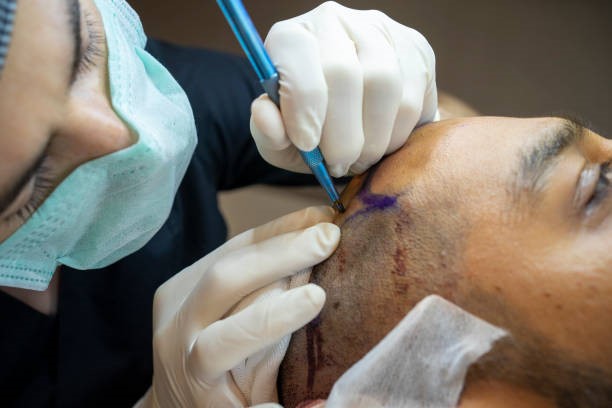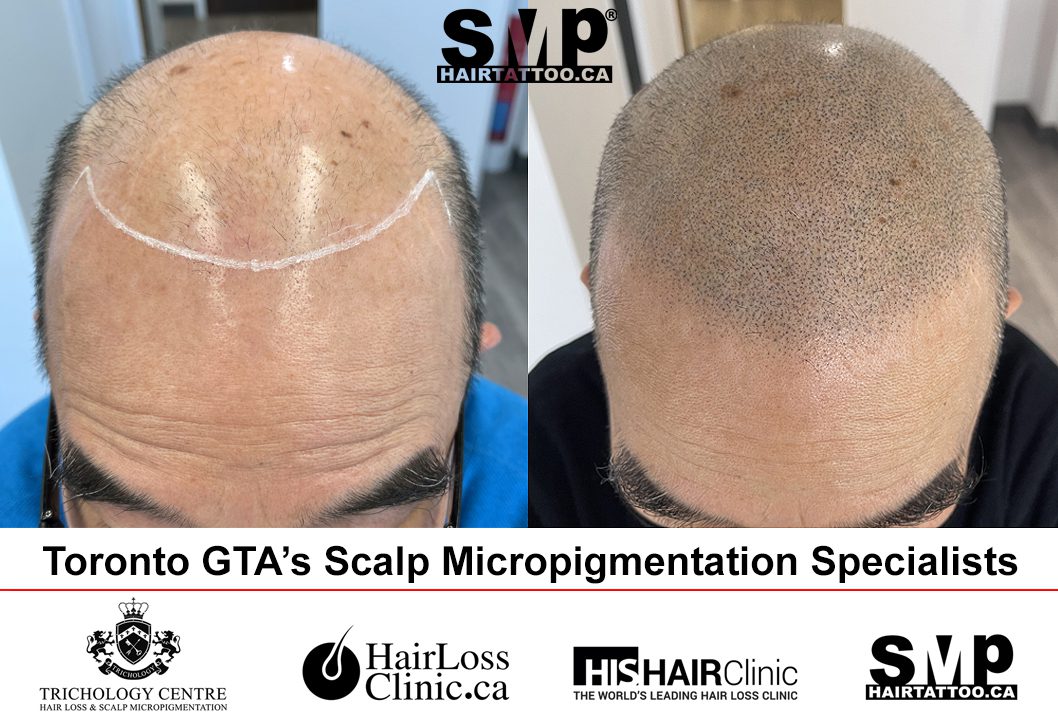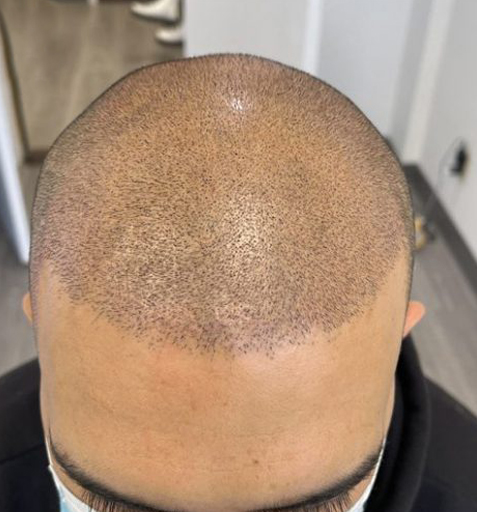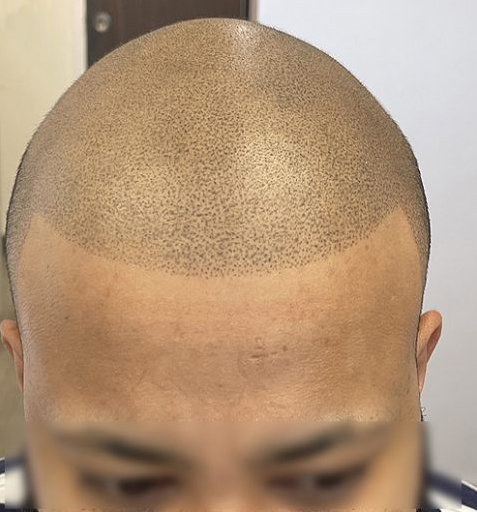
Table of Contents
When you consider restoring your hair, two popular methods come to mind: scalp micropigmentation vs hair transplant. Both treatments promise fuller, more confident hair. But how do you know which one is the best choice for you? Let’s break down the differences, benefits, and key factors so you can make an informed decision.


Table of Contents
Scalp micropigmentation (SMP) is a non-surgical hair loss solution where pigments are applied to the scalp. This mimics the appearance of hair follicles, creating the illusion of a fuller head of hair. It’s ideal for individuals dealing with thinning or receding hairlines.
You should consider SMP procedure benefits if you want a simple, non-invasive solution. It works well for people who don’t want to undergo surgery but still seek a natural-looking hair restoration option.
During an SMP procedure, the practitioner uses a specialized microneedle or machine to deposit pigments into the superficial layers of the scalp precisely. The pigment deposits’ size, shape, and depth are carefully controlled to achieve the desired appearance of hair follicles or stubble. The procedure is typically performed in multiple sessions to ensure optimal results and allow for gradual adjustments based on the client’s preferences.
Various techniques are employed during SMP to achieve natural-looking results. These include:
Scalp Micropigmentation offers immediate results, and the appearance of a fuller head of hair can be seen immediately after the procedure. The pigments in SMP are designed to match the client’s natural hair colour, resulting in a seamless and natural look. The density and distribution of the pigments are customized to create a realistic appearance of hair follicles or stubble. The results of SMP can be long-lasting, with proper maintenance and occasional touch-ups.
It’s important to note that SMP does not stimulate new hair growth. Instead, it creates the illusion of hair by replicating the appearance of hair follicles. The ultimate outcomes of SMP can differ based on variables like the individual’s skin type, the practitioner’s proficiency, and the adherence to proper aftercare. Regular touch-ups may be required over time to maintain the desired appearance.
A hair transplant involves moving hair follicles from a thick, healthy area of the scalp (usually the back or sides) to areas where hair is thinning or has completely fallen out. There are two common methods for hair transplant procedures: Follicular Unit Extraction (FUE) and Follicular Unit Transplantation (FUT).
Hair transplants are permanent hair restoration solutions. Once the follicles are transplanted, they grow just like your original hair. If you’re dealing with extensive hair loss, a hair transplant can provide a more natural and lasting solution compared to a scalp micropigmentation vs hair transplant.
Hair Transplantation typically involves the following steps:
Hair Transplantation provides long-term and natural-looking results. The transplanted hair follicles continue to grow hair in the recipient area just like the individual’s natural hair. However, it’s important to note that there is an initial shedding phase, where the transplanted hair falls out before new growth occurs. This shedding is temporary; new hair typically grows within a few months.
The final results of Hair Transplantation can take up to a year or more to fully manifest as the transplanted hair goes through its growth cycle. The density, growth, and overall appearance of the transplanted hair can vary depending on factors such as the quality of the donor’s hair, the surgeon’s skill, and individual characteristics. It’s important to have realistic expectations and understand that Hair Transplantation does not guarantee the same density or quality of hair before experiencing hair loss.
Now that we’ve covered the basics of both SMP and hair transplants, let’s dive into a direct comparison. Understanding how each method works and which one aligns with your needs will help you decide.
SMP tends to be more cost-effective compared to hair transplant recovery. The scalp micropigmentation cost is usually more affordable and accessible for individuals seeking a quick solution, while the cost of a hair transplant can vary depending on the extent of hair loss and the clinic you choose. However, hair transplants generally require a larger investment.
If you’re concerned about recovery, SMP wins hands down. There is no downtime with SMP, and you can resume your normal activities right away. With a hair transplant, however, you will need time to heal after the procedure. Recovery can take several weeks, depending on the method and your scalp’s healing process.
Hair transplants are the clear winner here. Once the follicles are transplanted, they grow just like natural hair, providing a permanent hair restoration. In contrast, SMP provides a temporary fix. While it can last several years, you will need occasional touch-ups to maintain the appearance.
If you want to avoid surgery, SMP is the best option. It’s a non-invasive procedure that doesn’t require any cutting or stitching. If you’re comfortable with surgery and want permanent hair growth, a hair transplant might be the better choice.
Choosing between scalp micropigmentation (SMP) and a hair transplant depends on your needs, goals, and lifestyle. Consider the severity of your hair loss. For advanced hair loss, a hair transplant might be better. For mild to moderate thinning, SMP can give the look you want. Think about whether you need a permanent solution. Hair transplants offer lasting results, while SMP requires touch-ups over time. Recovery time is also important. SMP has minimal downtime, while hair transplants need a longer healing period. Lastly, consider your budget. SMP is usually more affordable, while hair transplants are a bigger investment but offer long-term benefits.
Both scalp micropigmentation and hair transplants have their advantages and are effective solutions for hair restoration. If you want a quick, affordable hair loss treatment, SMP procedure benefits might be the perfect choice for you. On the other hand, if you’re dealing with significant hair loss and want a permanent hair restoration, a hair transplant could be the better investment.
While both options can address hair loss, a hair transplant is generally more suitable for individuals with extensive hair loss. Hair transplantation allows for the transplantation of many hair follicles to restore hair growth in the thinning or balding areas. Scalp micropigmentation, on the other hand, is best suited for individuals with existing hair or those who prefer a closely-cropped style, as it creates the appearance of hair follicles rather than stimulating new hair growth.
Yes, scalp micropigmentation can effectively camouflage scars from previous hair transplant procedures. By carefully matching the pigment colour to the surrounding hair and skin, the pigments can help conceal the scars, making them less noticeable and creating a more uniform appearance on the scalp.
When deciding between a hair transplant and scalp micropigmentation, individuals should consider factors such as the extent of hair loss, their hair restoration goals, budget, desired outcomes, and personal preferences. It is advisable to consult with experienced practitioners in both fields to discuss individual circumstances and receive personalized recommendations based on specific needs and expectations.
Scalp micropigmentation (SMP) is more cost-effective than hair transplants, which typically require a larger investment.
Hair transplants are the clear winner here. Once the follicles are transplanted, they grow just like natural hair, providing a permanent hair restoration. In contrast, SMP provides a temporary fix. While it can last several years, you will need occasional touch-ups to maintain the appearance.






© 2024 HAIRTATTOO.CA | Scalp Micropigmentation & Trichology Centre
